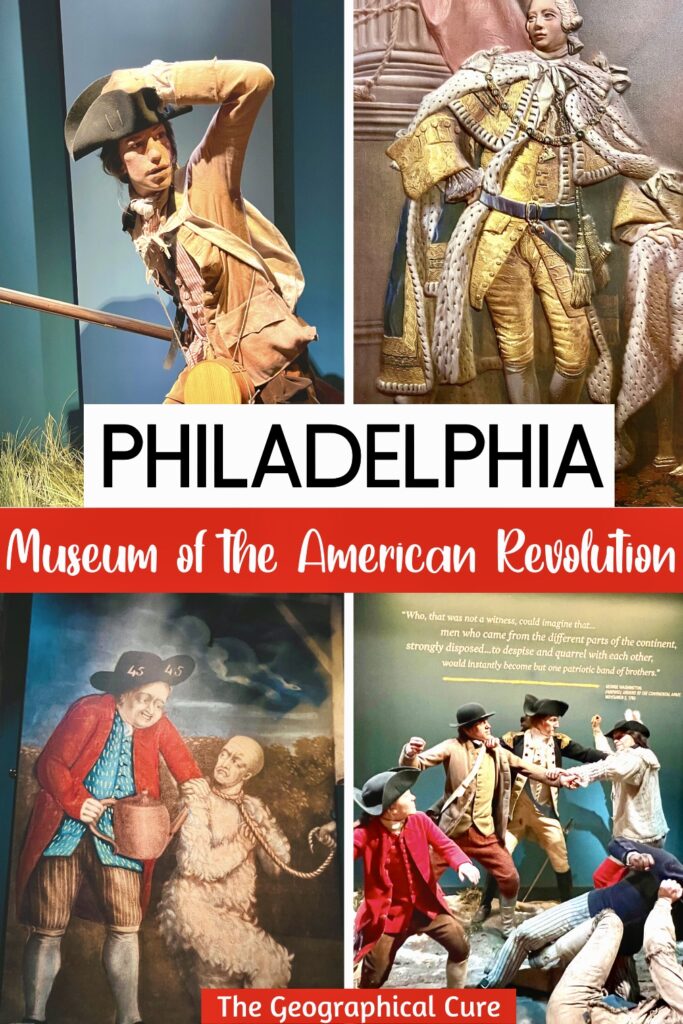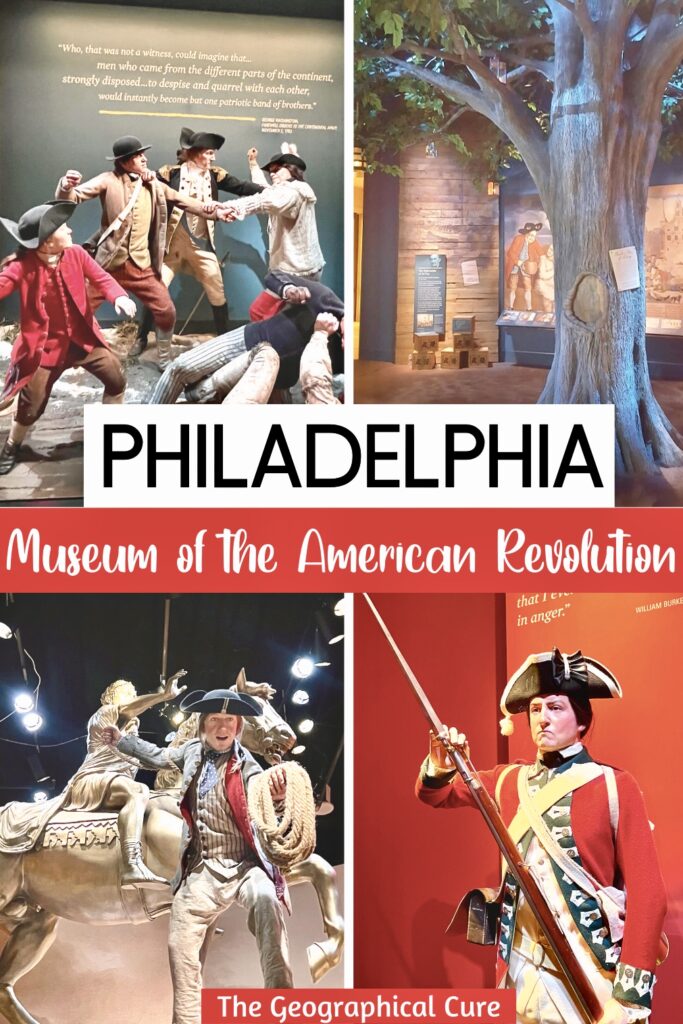The Museum of the American Revolution, located in Philadelphia’s Old City, is a must visit for history buffs.
It’s dedicated to “America’s Great Experiment,” the American Revolution and establishment of democracy. You’ll get the whole story of the fight for independence — from pre-Revolutionary rumblings straight on through to the Articles of Confederation.
The well-curated museum was built with $150 million in private funds. Opened 2017, it’s a veritable treasure trove of early American history.
You’ll find a nice balance of exhibits, artifacts, informational panels, interactive touch screens, and multiple theaters. You’ll read and listen to stories of courage and sacrifice that helped make a nation come to life.
The museum is theatrical, really more movie than dry text book. It’s well laid out and engaging for all ages.
And it’s not the usual heroic and idealized narrative you’re used to from history class. The museum doesn’t shy away from the messy contradictions and tumult of a protracted revolution.
There’s no doctrinal clarity. You’ll get a fuller, and more accurate, picture of the events that transpired.
To achieve this goal, the museum keeps its focus on the common man, not just the fabled leaders. After all, “freedom” didn’t mean the same thing for everyone.
You’ll be reminded of the plight of enslaved and marginalized people. How did they decide which master to serve?
This museum guide gives you an insider peak at the museum. You’ll get an overview of the museum’s organization, must-see exhibits, and essential tips for your visit.
>>> Click here to pre-book a skip the line ticket
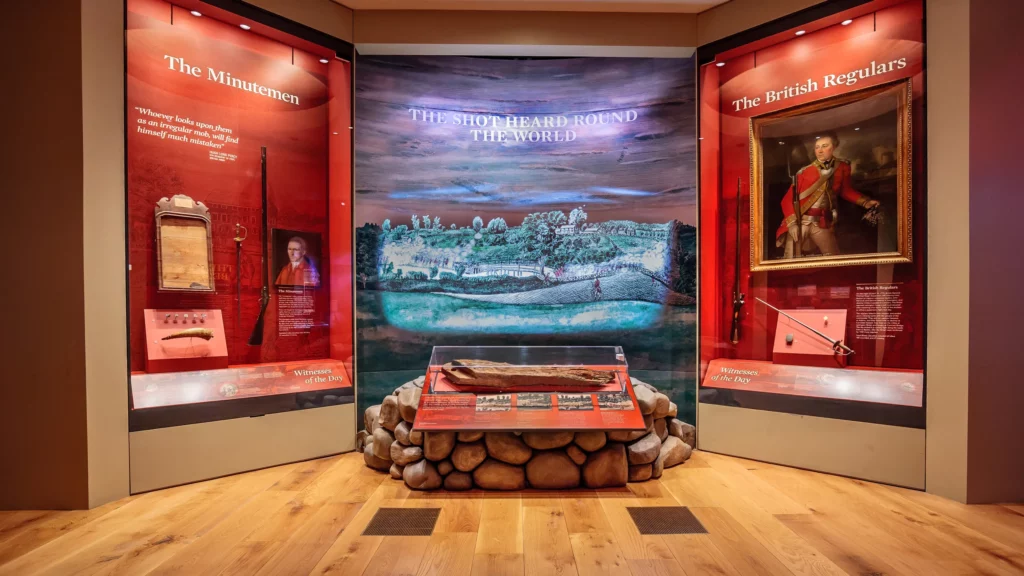
Overview Of The Museum
The museum’s collection boasts an impressive array of artifacts, documents, artworks, and interactive displays that bring the Revolutionary era to life.
The exhibits are organized to take visitors on a chronological journey of the events leading up to and during the American Revolution.
You enter on the first floor. Pick up a museum map and then head to the back to the Lenfest Theater. You’ll want to begin your journey with the introductory movie, Revolution.
The movie plays every hour on the top of the hour. I would try to time your visit to the museum to make sure you see it first.
After the movie, head up the winding elliptical staircase and enter the Oneida Nation Atrium. Turn right to begin a chronological journey over 18,000 square feet of galleries.
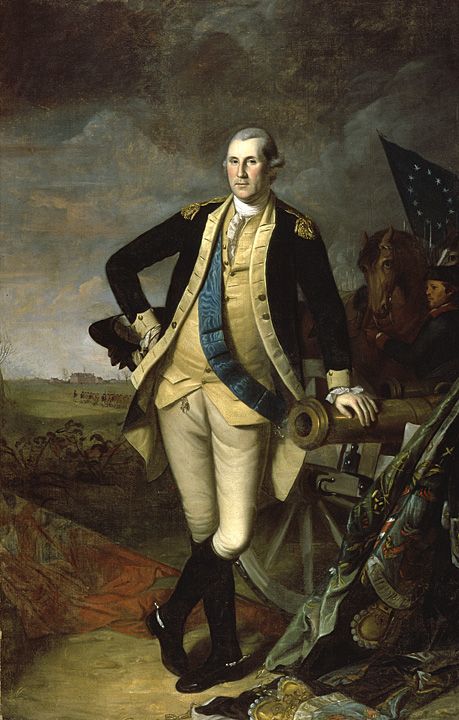
The four main spaces are: Becoming Revolutionaries, A Revolutionary War, The Darkest Hour, and A New Nation.
You’ll find explanations on how people became revolutionaries, how the war persisted against challenging odds, and what kind of nation the revolutionaries created.
The bulk of the collection is from the Valley Forge Historical Society, which had artifacts stored in a warehouse in Phoenixville. The rest is from donations, supporters, and auctions.
You’ll find seven large set pieces that are casts of real life figures depicting scenes from the war (though rather banal ones, nothing significant).
When you’re done head to the basement to see Washington’s Tent.
If you want to see all the movies, you can check out the schedule of daily showings here.
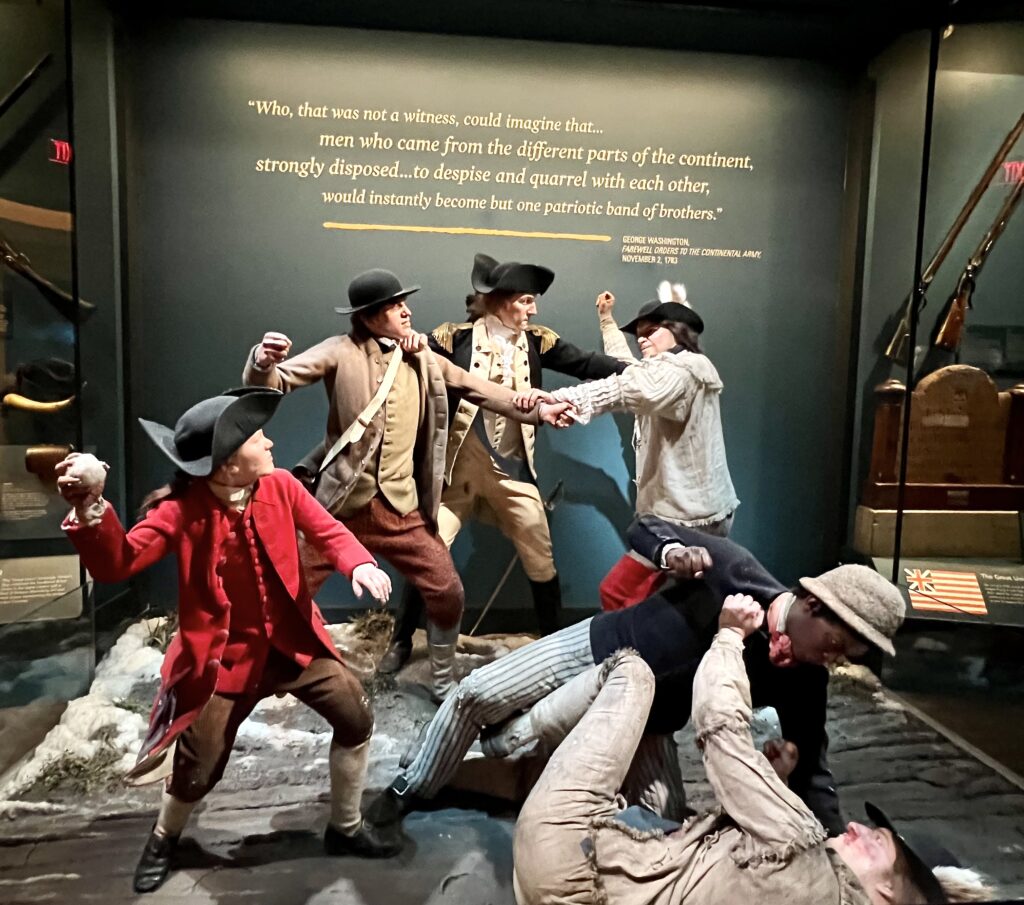
Must See Exhibits
While every exhibit at the Museum of the American Revolution is worth exploring, a few stand out for their historical significance and immersive storytelling.
Here’s what you don’t want to miss.
1. Revolution In The Lanfest Myer Theater
This 15 minute introductory film brings the American Revolution to life on the big screen.
Through high quality visuals and storytelling, Revolution transports viewers back to the 18th century, allowing you to witness key events and pivotal moments of the Revolutionary War.
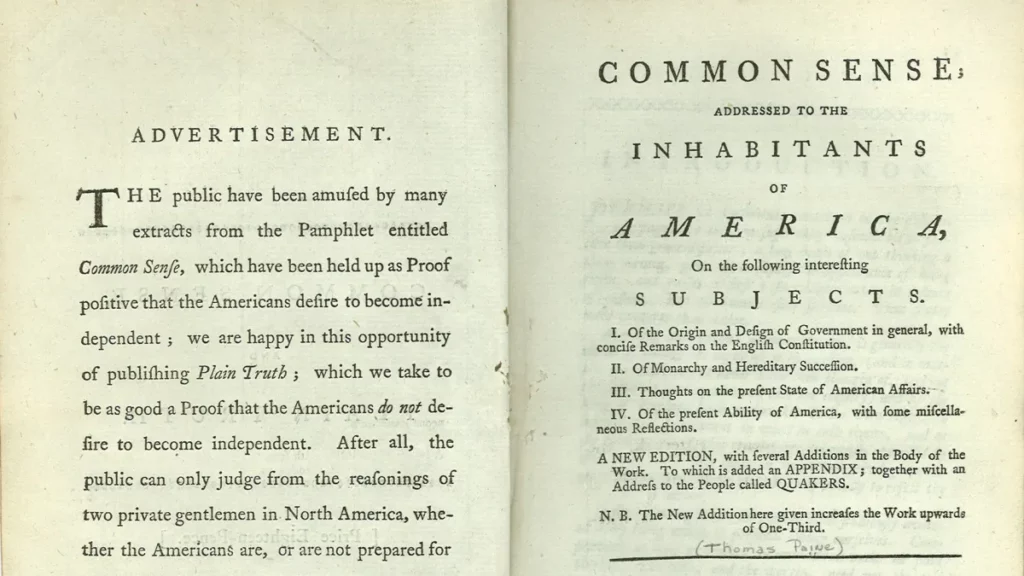
2. Becoming Revolutionaries Gallery
This first section of the museum explores the factors that led to the American colonies’ quest for independence, including the infamous Stamp Act and the Boston Tea Party.
The exhibit features the moment in New York City when citizens pulled down the statue of King George III after hearing the Declaration of Independence read aloud.
The gallery has a video recreation of the event that puts you in the center of action. You can even see chunks of the statue that still exist.
Other key artifacts include copies of influential documents like Thomas Paine’s Common Sense.
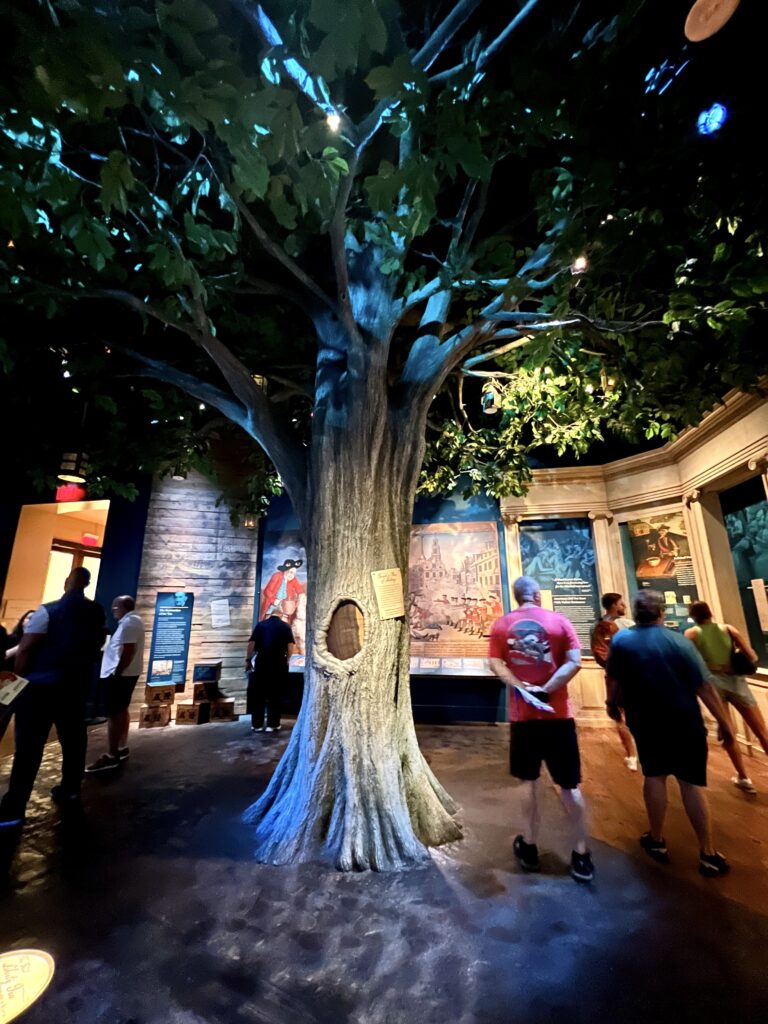
3. Liberty Tree
The Resistance Gallery is home to a large recreation of the Liberty Tree in Boston, which was a symbol of resistance against British rule.
This was where colonials gathered to debate the issues of the day, including taxation without representation.
The tree is 18 feet tall and weighs 2,000 pounds.
The lanterns on the tree represent the Revolutionary War soldiers who were wounded or killed in action. Each lantern represents a soldier. The different colors indicate whether the soldier was wounded or killed.
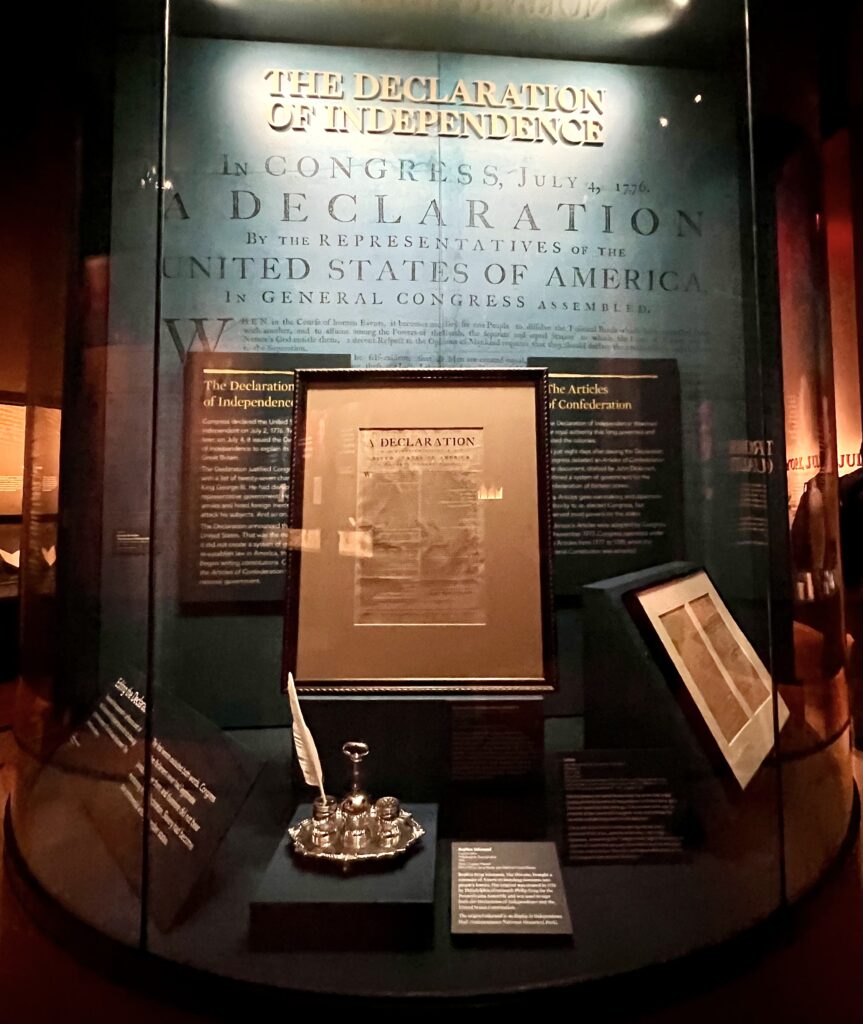
4. Declaration Of Independence
In this gallery, you’ll delve into the heart of the conflict, witnessing the challenges faced by both the Continental Army and British forces. The collection includes weaponry, uniforms, and battlefield relics.
The focus is not on lofty prose, but on the dialogue of independent people. Independence Theater shows a movie that attempts to recreate the feeling of Independence Hall.
You can view the unfolding debate and decision-making process. From an authentic printing of the Declaration of Independence, you can read the words of Thomas Jefferson and the grievances against King George III.
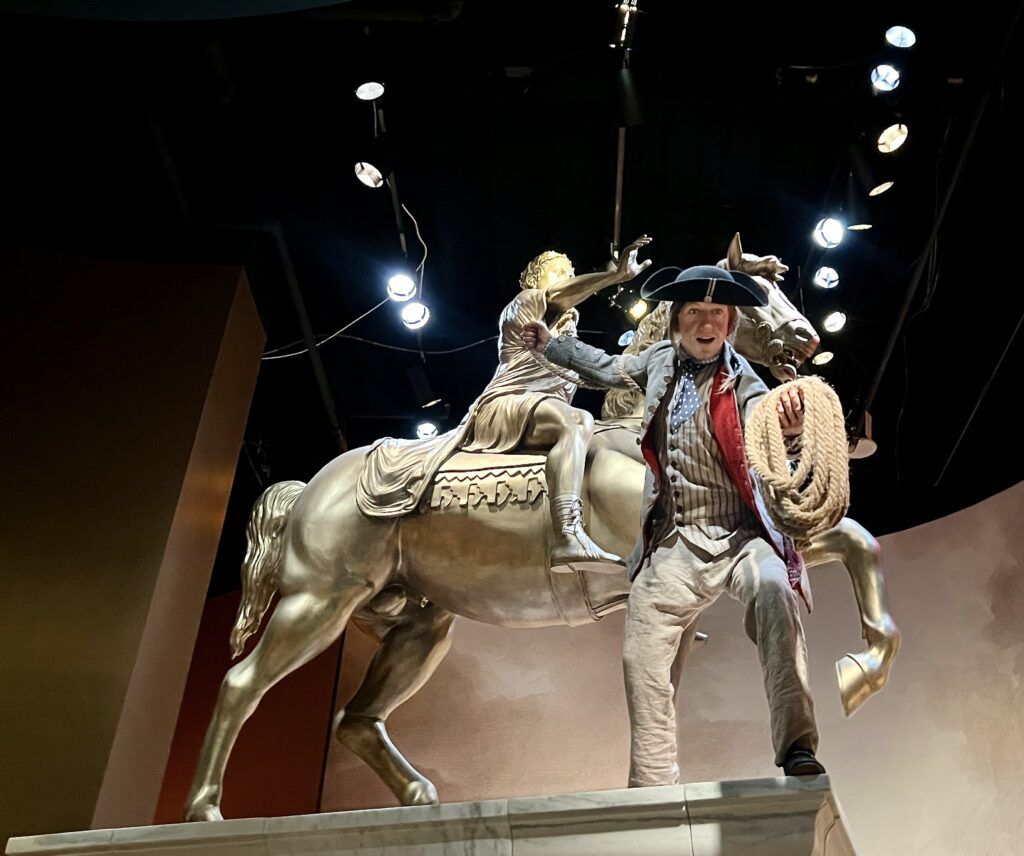
5. The Darkest Hour
Heading into this exhibit, you’ll find a replica of the equestrian statue of King George. He’s show in Roman clothing atop a horse, with a soldier holding a coil of rope next to him.
Given the destruction of the first statue, you’d almost think the man was handing you the rope to pull him down. The arrangement is supposed to make you wonder whether it’s a good thing to pull down symbols of oppression.
The monumental bronze statue was originally commissioned in the 1760s to stand in New York City’s Bowling Green.
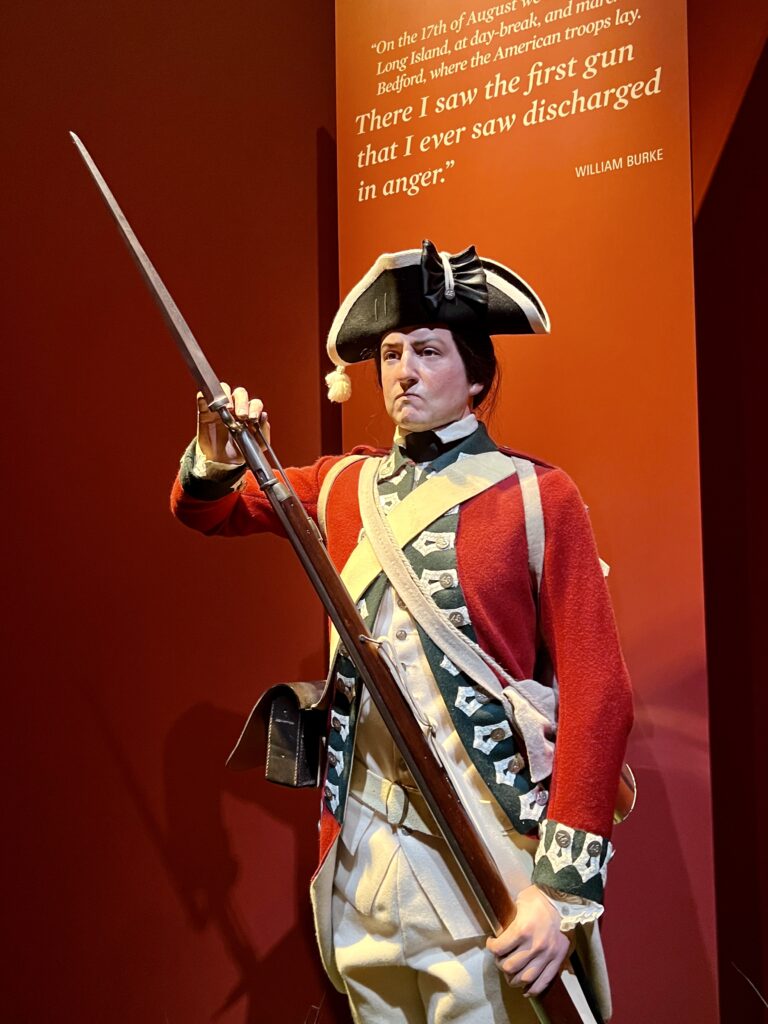
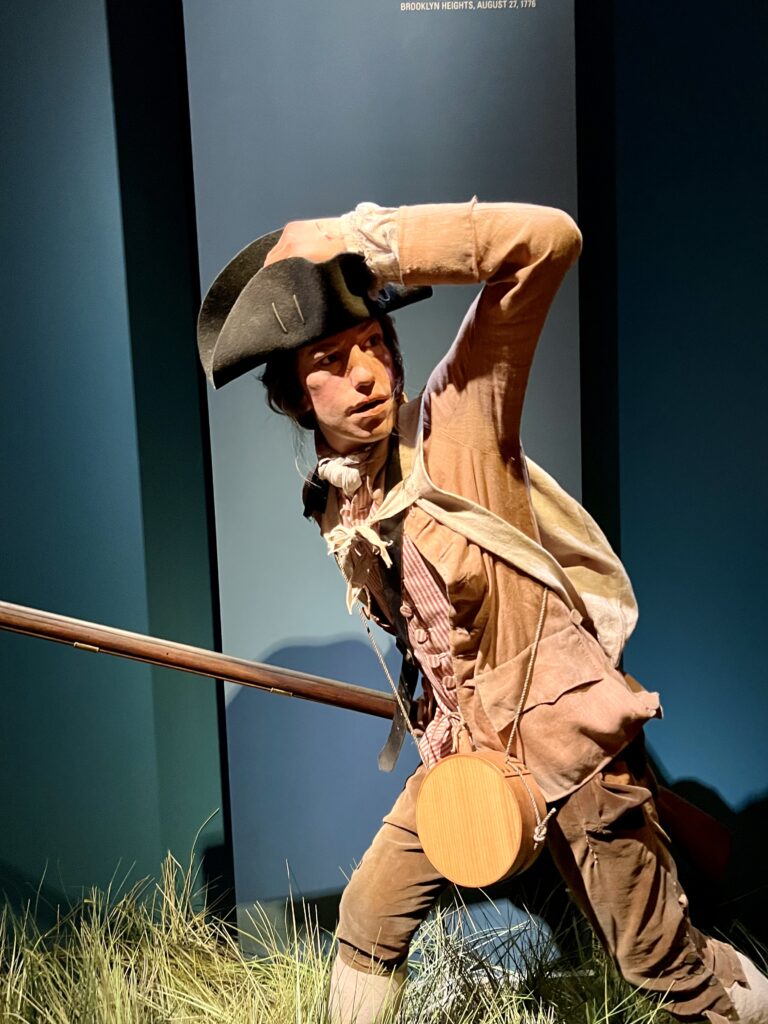
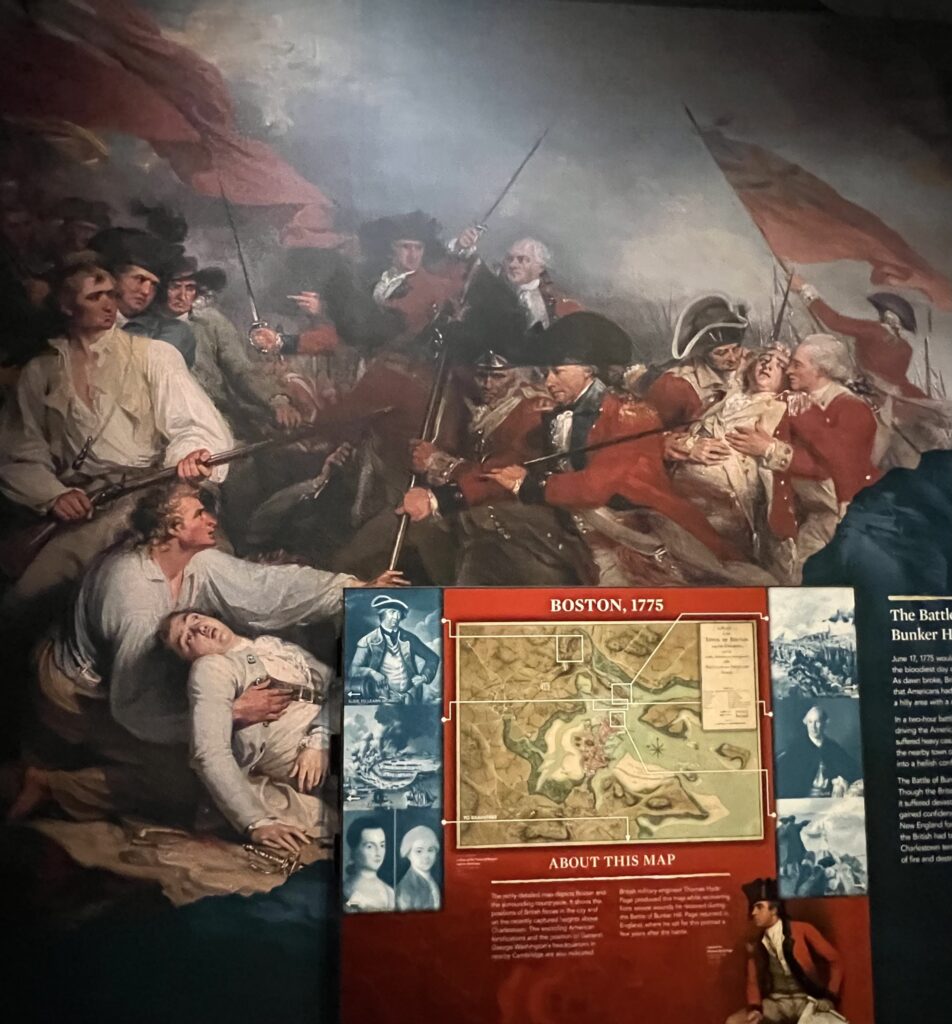
But it was toppled by American revolutionaries on July 9, 1776, as a symbolic act of defiance. And then melted down and turned into musket balls.
Four days later, they pulled down the king’s coat of arms in the courtroom of Independence Hall.
Once you’re in the “darkest hour” exhibit, you’ll learn how declaring independence was relatively easy. But securing it? Not so much.
You’ll see a floor sized map of the campaign in New York. And another interactive map highlights the advances and skirmishes from the Battles of Trenton and Princeton.
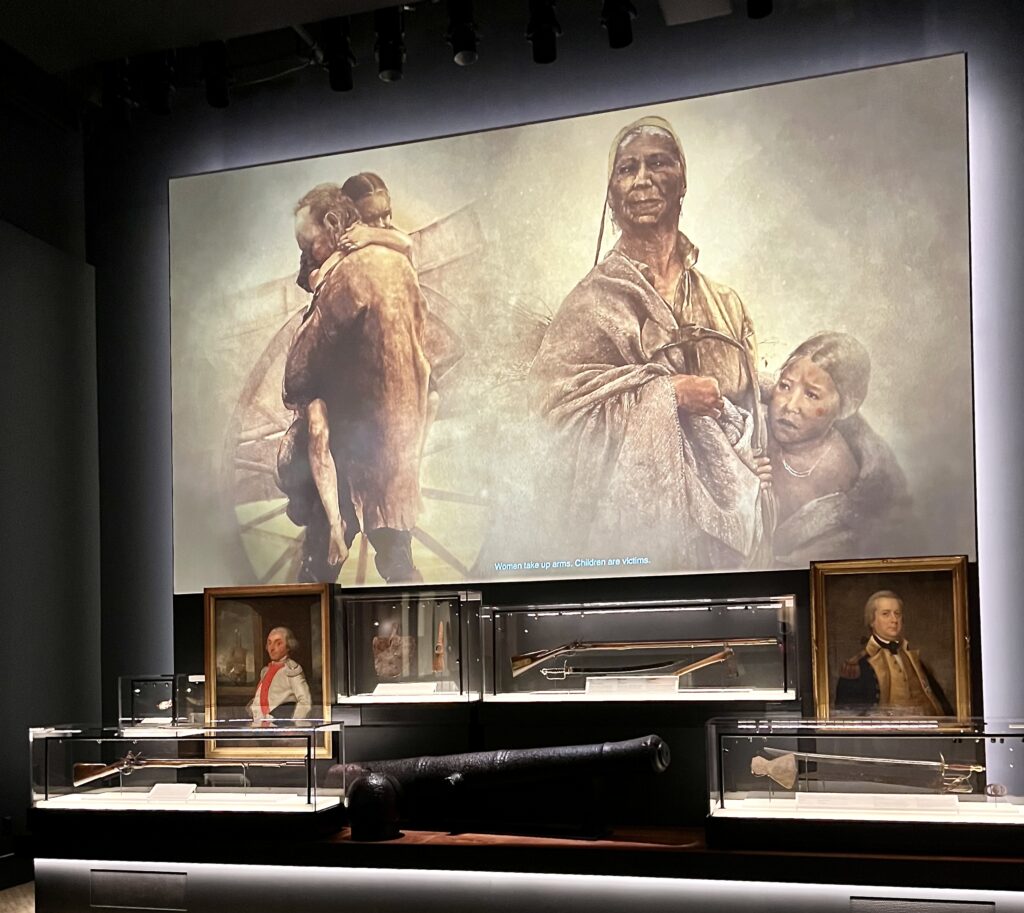
6. Oneida Nation Exhibit
This exhibit sheds light on the contributions of Native American communities to the revolution.
It explores the role of the Oneida Nation, one of the Six Nations of the Haudenosaunee (Iroquois Confederacy), during the American Revolution. They had a complex decision to make. Could they back the revolutionary without losing their own independence?
One of the central features of the exhibit is a short film titled Oneida: The First Allies in the Oneida Nation Theater.
The film recounts the story of the Oneida Nation’s decision to support the American colonists. The film delves into the motivations behind the Oneida’s alliance with the Patriots, the challenges they faced, and the impact of their contributions to the American Revolutionary War.
7. Battle of Brandywine Theater
This movie takes your through the Battle of Brandywine. It was a British infantry charge on September 11, 1777.
The Continental Army, led by Washington, suffered a bad loss. But they were able to retreat and regroup.
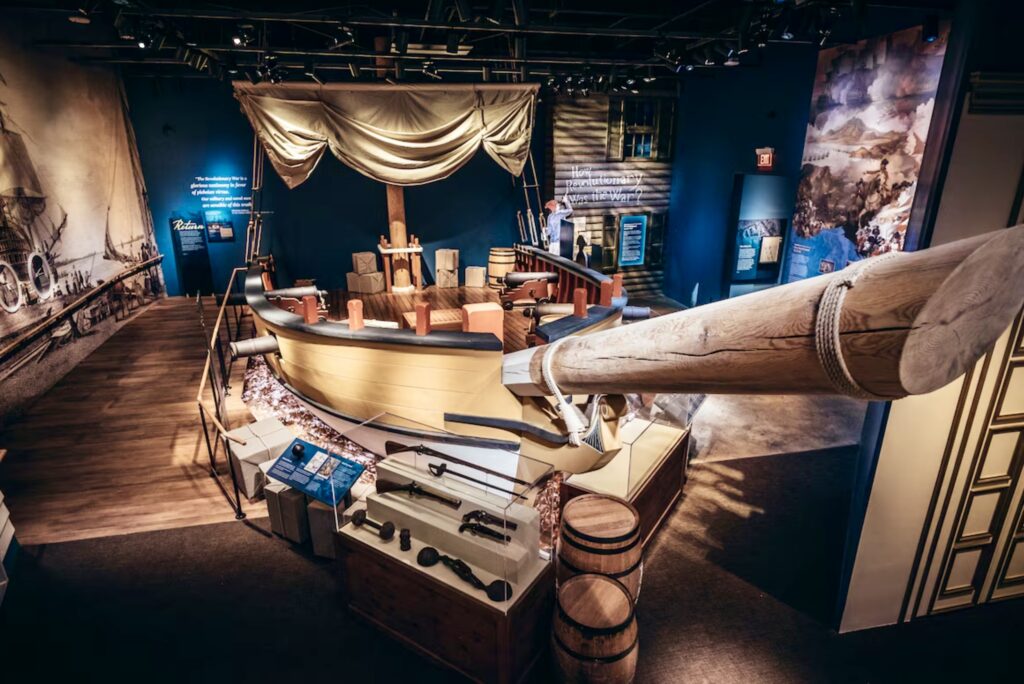
8. Privateer Ship
The Museum of the American Revolution has a replica of a 45 foot long privateer ship. You can walk right into it.
Privateers were like pirates, but they had permission to attack British ships. This boat was one of the first American privateers.
It helped capture a British ship in 1775, which was a rather significant. The exhibit shows how privateers played a part in the Revolution. You can see models and learn about their daring adventures on the high seas.
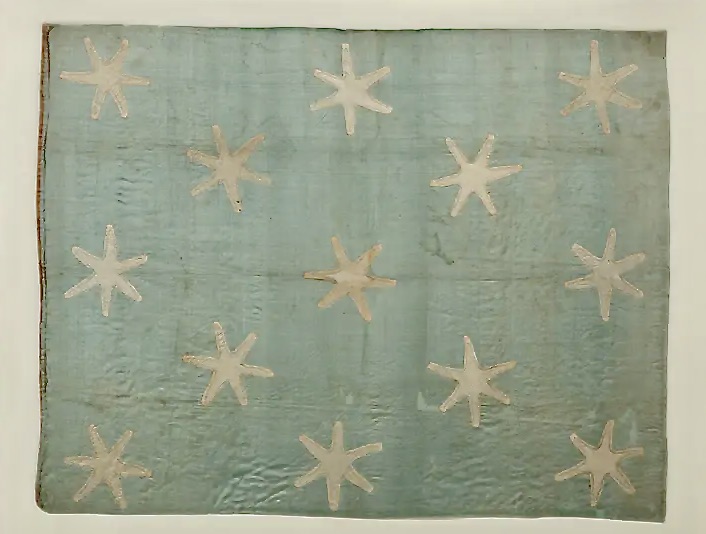
9. Revolutionary-Era Artifacts
Take a close look at everyday objects used by soldiers and civilians during the war. You’ll find everything from muskets, rifles, a war drum, Washington’s silk flag, powder horns, slave shackles, and household items like teapots.
10. A New Nation
In the last gallery you’ll learn that revolution was a continuing project. There’s one last film.
And you’ll learn about the constitution, which only came after the nation had claimed independence for ten years.
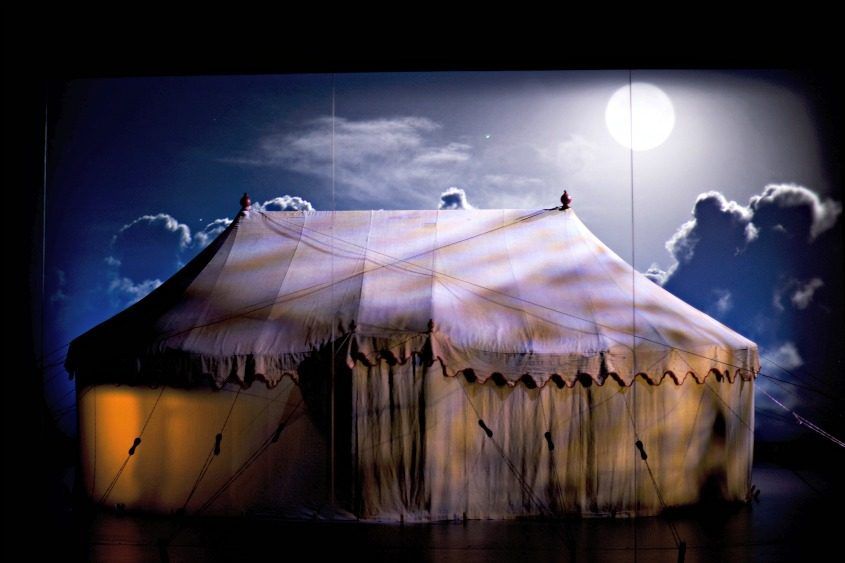
11. Washington’s Tent
The War Tent Theater is a dedicated space that provides visitors with an immersive experience. It’s downstairs in the basement level in the Alan B. Miller Theater. Be sure to head down so you don’t miss it.
There’s a 12 minute video explaining it all to you. After that is the big reveal –General George Washington’s original field tent, often referred to as his “war tent.” It’s where he lived and retired to read dispatches.
It’s the museum’s crown jewel and is certainly stirring to see. This tent served as Washington’s mobile headquarters during the American Revolutionary War.
The tent is displayed in a controlled environment to ensure its preservation and to allow visitors to view it up close. It is positioned within a glass enclosure, allowing you to see this remarkable piece of history in incredible detail.
12. Revolution Place
Revolution Place is a discovery center for kids on the lower level. It features four recreated historical environments in Philadelphia.
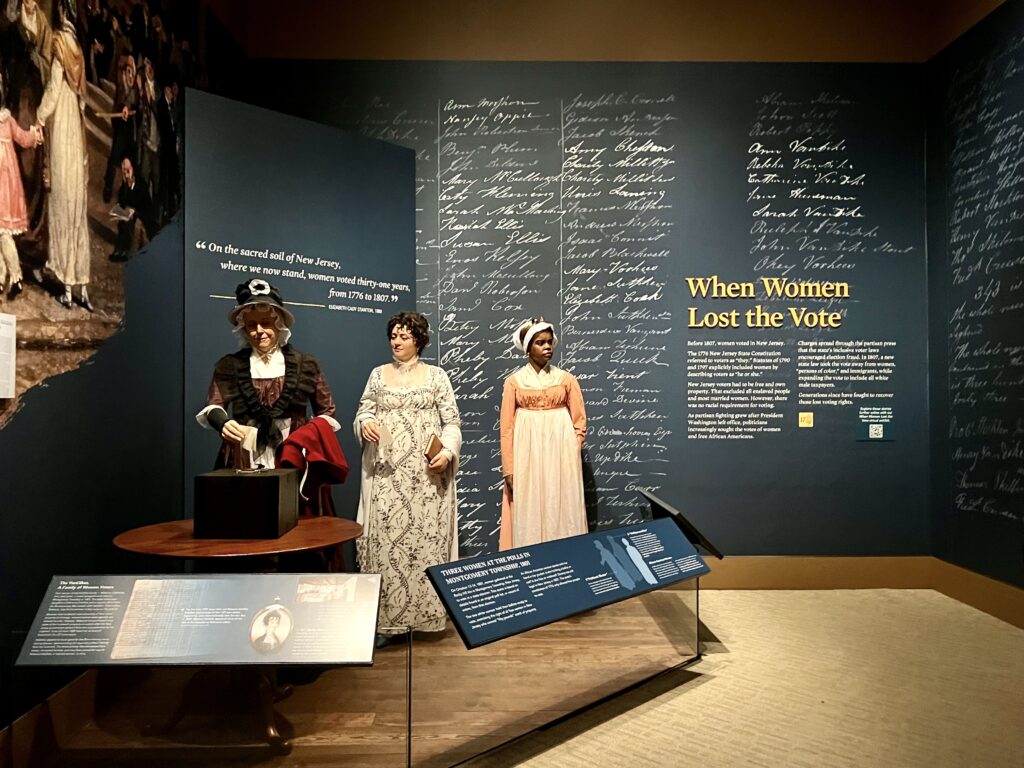
Practical Guide & Tips for Visiting
Address: 101 S 3rd St, Philadelphia, PA 19106
Hours: Open daily 10:00 am to 5:00 pm. I would try to avoid school holidays, as you may get a slew of student field trips.
Tickets:
Adults $24, seniors and students $19. The price is $3 cheaper if you book online on the museum website.
Admission is included with the Philadelphia Go City Pass. To avoid crowds, you may want to book this early bird tour of the museum.
How Much Time To Spend?
It depends on your level of interest. You could breeze in and out in an hour, especially if you’re bringing kids.
But I’d suggest giving 2-3 hours to explore the museum thoroughly. There’s literally so much information you could be there for days reading and listening. And you’ll want to spend time watching the movies.
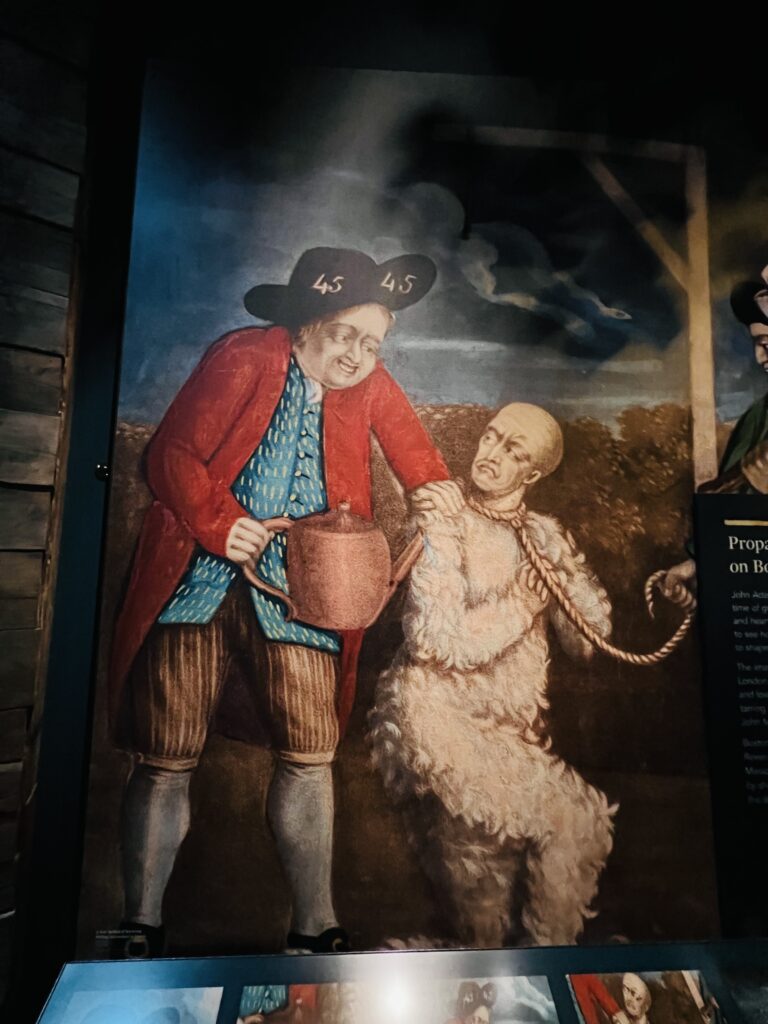
Guided Tours:
The museum provides a range of tour options to enhance your visit. You can opt for guided tours, including family-focused highlight tours, for a fee.
Additionally, there are audio tours available at just $5. Or you can access them for free on your mobile phone.
However, if you prefer to explore independently, rest assured that you can still glean a wealth of information during your visit. I was overwhelmed with the sheer quantity of written material.
Gift Shop: The first floor gift shop has plenty of trinkets for kids. There’s also a large selection of books for history buffs.
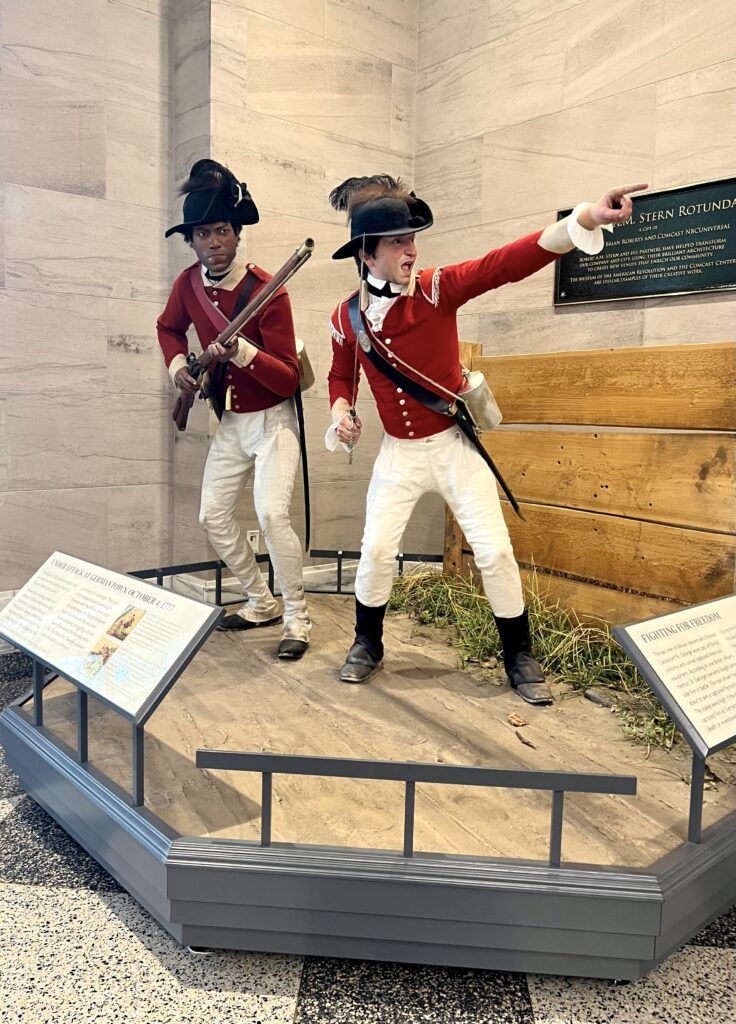
Photography: You can take photos without a flash. But be forewarned, the museum is quite dark.
What Other Attractions Are Near the Museum?
The museum is located on a patriotic piece of real estate just several blocks from Independence National Historical Park. So after your museum visit, you can visit Independence Hall, the Liberty Bell Center, the National Constitution Center, the Betsy Ross House, etc.
The National Constitution Center also has a “We the People” exhibit, so you will find some overlap there.
I hope you’ve enjoyed my guide to the Museum of the American Revolution. You may enjoy these other Philadelphia travel guides and resources:
- 2 Days in Philadelphia Itinerary
- 3 Days in Philadelphia Itinerary
- Best art museums in Philadelphia
- Top Attractions in Philadelphia
- Guide to the Philadelphia Museum of Art
- Guide to Philadelphia’s Rodin Museum
- Guide to Eastern State Penitentiary
- Guide to Independence National Historical Park
- Guide to the Betsy Ross House
- Guide to the Mutter Museum
- Guide to The Barnes Foundation
- Best history museums in Philadelphia
- Guide to the Pennsylvania Academy of Fine Arts
If you’d like to visit the Museum of the American revolution, pin it for later.

